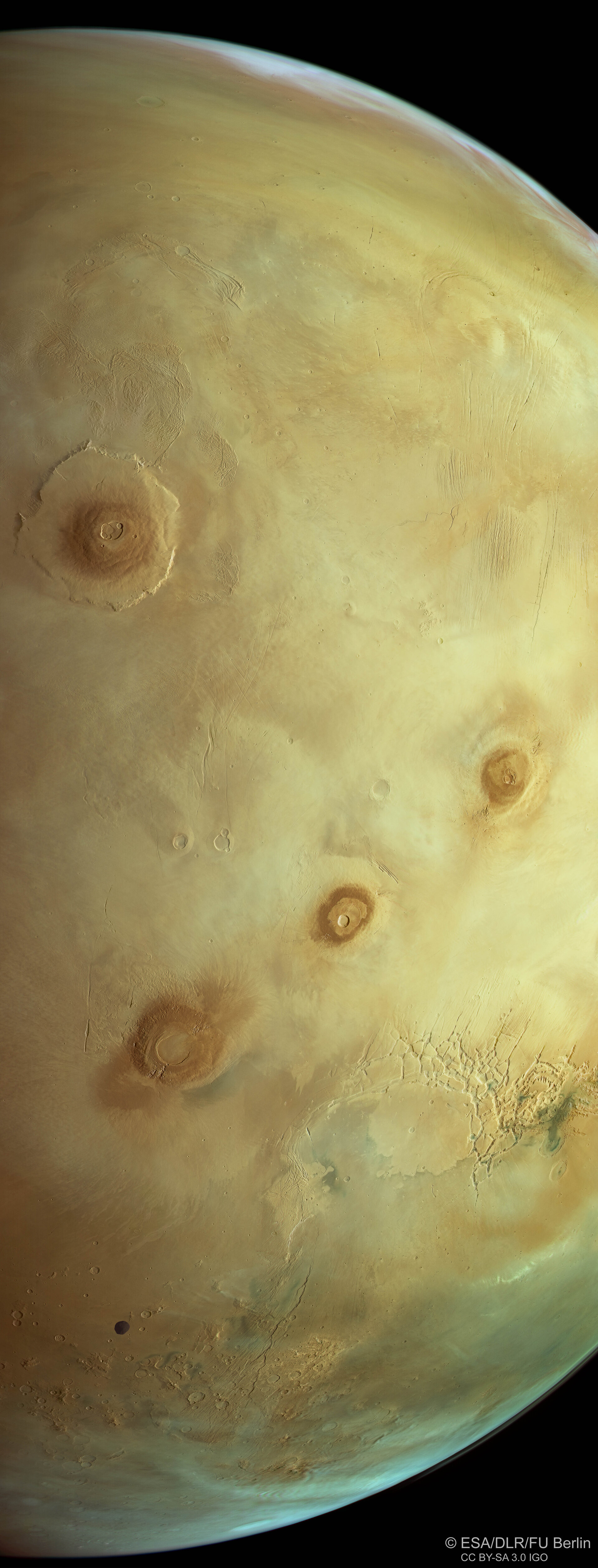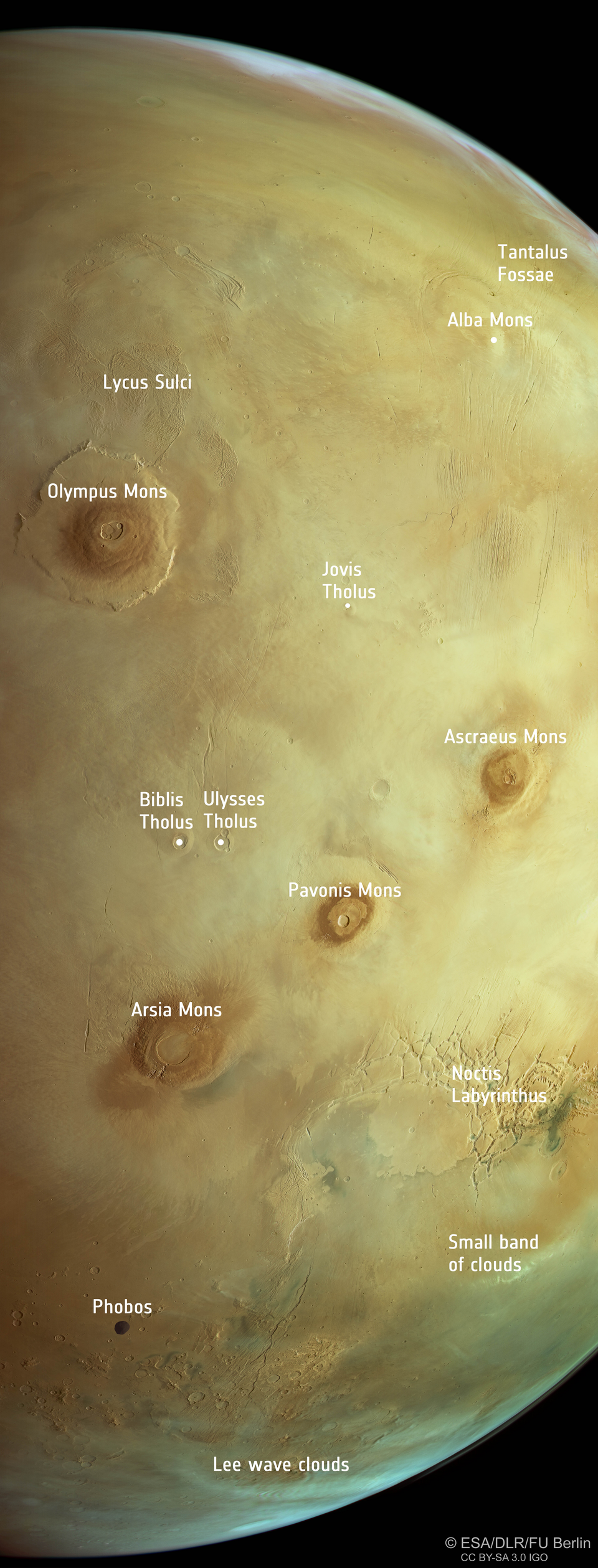29.03.2024

ESA’s Mars Express recently looped around Mars for the 25 000th time – and the orbiter has captured yet another spectacular view of the Red Planet to mark the occasion.
The new high-altitude view was taken by Mars Express's High Resolution Stereo Camera (HRSC). It features many of Mars’s towering volcanoes and even includes a surprise appearance from the planet’s largest moon, Phobos.
Mars Express arrived at Mars in late 2003, and completed its 25 000th orbit on 19 October 2023. In the two decades since its arrival, the orbiter has completely transformed our understanding of the planet. It’s mapped the atmosphere more completely than ever before, traced the history of water across Mars's surface, studied the two small martian moons in unprecedented detail, and returned breathtaking views of the planet in three dimensions.

This new image is no exception. It focuses on the Tharsis region, which covers about one-quarter of the planet’s surface and is home to Mars’s famously colossal volcanoes. Many volcanoes can be seen here: Olympus, Arsia, Pavonis and Ascraeus Mons, and Jovis, Biblis and Ulysses Tholus. Olympus Mons is the largest, reaching nearly 22 km high (compared to Mount Everest’s 8.8 km here on Earth).
Canyons and clouds
Fascinating as they are, Mars’s volcanoes are far from the only interesting feature seen here. Excitingly, Mars Express has also captured an unexpected visitor in Mars’s largest moon, Phobos, which can be seen as a dark blob passing through to the lower left. Phobos sits very close to Mars by Solar System standards, orbiting just 6000 km from Mars's surface. For context, our own moon lies about 385 000 km away from Earth’s surface.
The fractured, fissured canyons of Noctis Labyrinthus – viewed several times before by Mars Express, including in a visualised fly-through – can also be seen below the trio of volcanoes slicing across the frame. The large landslide of Lycus Sulci can be spotted just north of Olympus Mons, as can the troughs and valleys of Tantalus Fossae to the upper right. These features have also been explored before by Mars Express.
Some fascinating weather features can be seen to the bottom of the frame, where a blue tinge creeps into this otherwise sand-hued scene. The colourful bands are clouds: a small, bright band of clouds to the right, and rippling ‘lee wave’ clouds to the left. Lee wave clouds arise when stacks of air flow over an obstacle on the terrain below, like a raised ridge, and receive a burst of speed in the process. The air then forms a wave-like feature on the sheltered (lee) side of the ridge.
Exploring Mars
Mars Express has revealed a great deal about Mars in the last two decades – and it’s not stopping yet. The orbiter continues to image Mars’s surface, map its minerals, explore the composition and circulation of its atmosphere, probe beneath its crust, and study the martian environment.
The spacecraft’s HRSC, responsible for these new images marking 25 000 orbits, has shown us everything from wind-sculpted ridges and grooves to sinkholes on the flanks of colossal volcanoes to impact craters, tectonic faults, river channels and ancient lava pools. The mission has been immensely productive over its lifetime, creating a far fuller and more accurate understanding of our planetary neighbour than ever before.
Quelle: ESA

